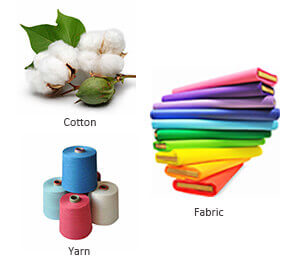
NewsInformation Center
Tell about the technological nature of textile fiber testing equipment
2021/11/18
An instrument for testing the technological properties of fiber length, fineness, crimp, yarn twist, yarn hairiness and moisture regain. There are fiber length tester, fiber fineness tester, fiber crimp tester, yarn hairiness tester, yarn twist tester, moisture regain tester, etc.
Fiber length meter
An instrument for detecting the straight length of the fiber. At the beginning of the 20th century, people used the hand-pulling method to measure the length of the fiber bundle. In the early 1930s, the arranging method and the comb method were used to detect the length. In the 1950s, manual adjustment and detection were used, and soon it was changed to servo motor automatic tracking. In the 1970s, the United States developed a new camera length meter, which can measure the length of cotton fiber and chemical fiber, up to 63 mm. In the 1980s, it has been further developed into digital display, automatic data processing and printing out related length indicators, and the test efficiency has been significantly improved. The Arealometer capacitive wool length meter produced in Belgium is equipped with an automatic fiber finishing mechanism, which can arrange the fibers into a neat bundle at one end. When the hair bundle is placed on the plastic film and passed through the electric field, the average length of the hairs and the weight-weighted average length can be obtained. This kind of instrument is only suitable for wool tops, and the error is relatively large when used for loose wool. The length of cotton fiber in China mainly uses a roller-type length tester. The fibers neatly arranged at one end are placed on the instrument, and the weight-weighted average length and other indicators are obtained after grouping and weighing at a certain interval. The length of wool fiber is generally measured with a comb length meter. The length of raw silk and chemical fiber filaments is measured with a yarn frame length gauge with a certain circumference.

Fiber fineness meter
The methods to detect fiber fineness are:
①Direct method: or mid-cut method, cut a fixed-length parallel straight fiber bundle, calculate the metric count, denier or special number of the single fiber after weighing and counting the number of fibers, only some simple weighing is required instrument.
②Indirect method: There are airflow method and sound pressure method. When airflow or sound waves pass through a quantitative cluster of fiber aggregates, the air pressure and sound pressure change, and the magnitude of the change varies with the thickness of the fiber. Generally, the thinner the fiber, the more the air pressure and sound pressure decrease. Various types of airflow fineness meters based on this principle appeared in the early 1950s. Later, China developed a digital micro-pressure airflow fineness meter suitable for a variety of fibers.
③Vibration method: According to the principle that the mass per unit length of the fiber has a certain relationship with its natural frequency under a certain tension, the vibration method fineness meter can measure the fineness of individual fibers and filaments, and obtain the coefficient of variation of fineness. The fiber width meter detects the radial projection width of the fiber in the natural state. When the cross-section of the fiber is circular, this width corresponds to the fiber diameter. The diameter of wool fiber is used as the basis for quality evaluation. The fiber width or diameter is generally detected by a biological microscope or a projector, but it is more troublesome and the efficiency is very low. Therefore, an instrument for measuring fiber diameter with a laser appeared. This instrument is designed based on the fact that when the fiber dispersed in the liquid stream passes through a 1 mm laser, the amount of laser scattering is proportional to the fiber diameter. With this instrument, the diameter and distribution of individual fibers can be measured.
Previous: Artificial weathering test conditions for carbon arc lamps
N e x t : Five new textile printing and dyeing technologies



